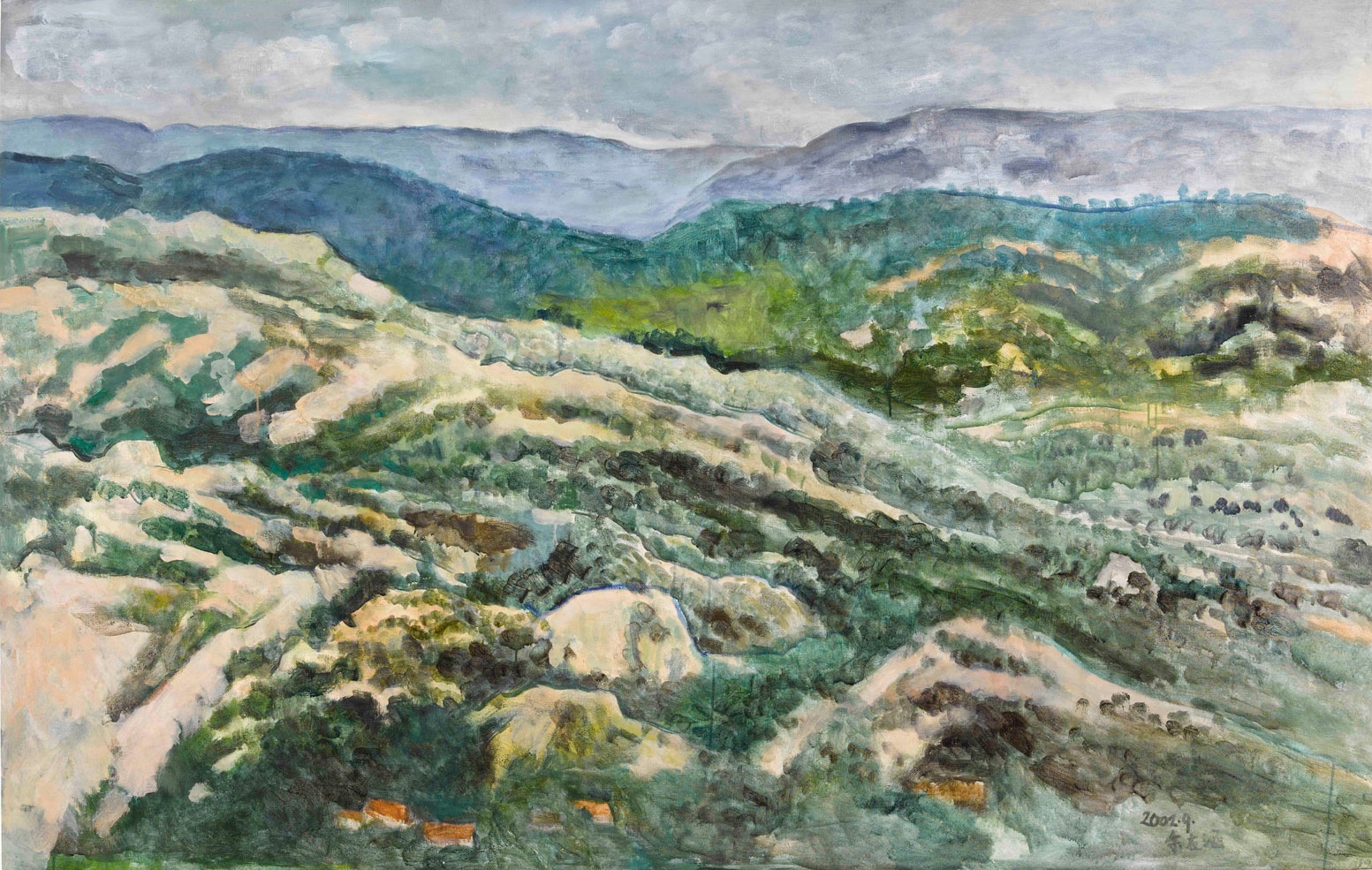It is almost inconceivable that the range of styles on show in Yu Youhan’s first solo exhibition at Yuan Space could be the work of a single artist. The show includes his neofauvist portraits, created during the 1970s, his expressionist Shanghai street scenes of the 1980s, his infamous Pop-style Mao series from the 1990s and impressionistic landscapes of the Yimeng Shan painted since 2000. And while experimenting with all these genres, Yu continued to paint his signature Circles abstractions. At Yuan Space, he demonstrates more than the equal impact of both Western and Chinese artistic traditions on his own creative practice; as we observe his shifts from one genre to another over the last four decades, we are reminded of the complex, constantly changing sociopolitical context, to which the artist has responded, in ways that are personal, philosophical and humble.
His fauvist-style portraits and expressionist Shanghai street scenes may seem rather dilettante, particularly as they are art-historically anachronistic. But like many other artists at the beginning of China’s reform period, Yu was eager to experiment with the various artistic styles from the West upon gaining access to greater knowledge and freedom of expression.
In the two types of paintings – humorous depictions of Mao in the style of famous Western masters such as Rousseau, Chagall and Van Gogh, or the jubilant Mao decorated with flowers in historical moments and his juxtaposition with Whitney Houston – from the Mao series shown in this exhibition, Yu has reversed the role of the ‘great helmsman’, from being the idol of the Cultural Revolution period to being a normal person. Unlike some of Yu’s contemporaries, such as Wang Guangyi – who projected political cynicism in his 1990s Great Criticism series – or Li Shan’s effeminate and coquettish Mao portraits, Yu Youhan’s equivocal attitudes towards Mao do not quite fit the definition of Pop art. Rather, as the artist suggests, they are paintings of his life experience executed in a modern style.
Mostly painted in the last decade, the Yi Meng Shan series (which constitutes a large portion of the exhibition) is another subtle comment on rapid urbanisation. On a scouting trip to the Yimeng Mountains, Yu was reacquainted with the serenity of the natural landscape and the humility of the locals – an impression that contrasts with the alienating concrete shells of urban life. One can easily identify this series as a synthesis of early-twentieth-century French Impressionism, in particular the works of Cézanne, with an obvious reference to Chinese literati painting (via its fluidity and unrestrained brushmarks). Traditionally speaking, Chinese landscape paintings were not simple representations of the scenery, but the artist’s embodiments of certain cultural attitudes towards the relationship between man and nature. Yu’s adoption of a Western artistic medium suggests that the tension between Western and Chinese artistic traditions remains unresolved in the renditions of these landscapes. And yet it is precisely their coexistence that provides dynamic and open-ended possibilities for various cultural viewpoints.
Another major portion of the exhibition is devoted to Yu’s Circle series. Often painted in monochrome, the alignment of dots into lines combined with the use of various shades of colour block express both the inertia and freedom of movement of the universe and the constant flux of human thought processes. Despite using acrylic paints, Yu’s brushmarks make reference to the technique of traditional Chinese calligraphy and painting, in which ink is allowed to drip off each brushstroke to highlight the principle of natural occurrence. The Circles of various periods are expressive of their respective social, political and personal context, whether the more contained circle of 1985.05 (1985), the bright-coloured 1991.04 (1991) or the latest, 2012.03 (2012), the solemnity and gracefulness of which seems to have come full circle in the artist’s attitudes towards the tradition and the context in which he belongs. In this respect, the Circle series does indeed illustrate Hans Ulrich Obrist’s comment about abstraction being ‘a microcosm of society’. Yu has adroitly assigned an elegance to his abstractions, which the artist conceived as being primarily about the mind and that display a humility in their deployment of minimal gesture which nevertheless produces a superior outcome.
This article was first published in the December 2013 issue.
